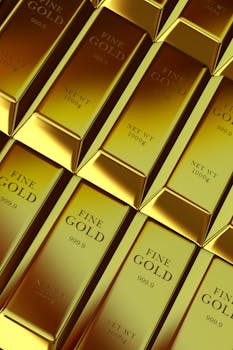
**
Is Silver the New Gold? Why "Poor Man's Gold" is Quietly Outshining Precious Metals
For years, gold has reigned supreme as the ultimate safe haven asset and a hedge against inflation. But whispers are growing louder in the investment community: silver, often dubbed "poor man's gold," is quietly emerging as a serious contender, potentially even outshining its more illustrious counterpart. This isn't just about price fluctuations; it's about a confluence of factors that are positioning silver for a significant surge in value and investor interest. From industrial demand to its role as a precious metal, let's delve into why silver is gaining traction and whether it's time to consider adding it to your portfolio.
The Allure of Silver: More Than Just Shiny Metal
The perception of silver as a cheaper alternative to gold is only part of the story. While historically less expensive per ounce, silver possesses unique properties making it far more than just a cheaper precious metal. Its industrial applications are vast and crucial to modern technology, creating a robust demand that gold simply doesn't share. This dual nature – as both a precious and an industrial metal – gives silver a unique edge in the investment world.
Key reasons for silver's rising appeal:
Industrial Demand: Silver is an essential component in numerous industries, including electronics (solar panels, smartphones, computers), automobiles (catalysts, sensors), and healthcare (medical devices). The growing global demand for technology and renewable energy sources directly translates to increased silver demand, creating price support and reducing its volatility compared to some other commodities.
Limited Supply: Unlike gold, which has seen significant exploration and mining over centuries, silver supply is becoming increasingly constrained. This scarcity, coupled with rising demand, creates a classic supply-demand imbalance that often drives price increases. This contrasts with the relative abundance of gold, which can exert downward pressure on its price in the face of market uncertainty.
Hedge Against Inflation: Like gold, silver acts as a hedge against inflation, preserving purchasing power during periods of economic uncertainty. As inflation rates rise, investors often flock to precious metals, driving up their prices. While gold traditionally holds this position, silver's growing industrial demand adds another layer of protection.
Under-owned Asset: Compared to gold, silver is significantly under-owned by both institutional and individual investors. This low ownership makes it potentially more susceptible to price surges based on increased demand. A surge in investment could drive a rapid appreciation in silver's value, potentially exceeding that of gold in percentage terms.
Silver Price Volatility: While some see volatility as a risk, others see it as an opportunity. Silver's price fluctuations can offer higher potential returns compared to the relatively stable price of gold. This increased volatility is a double-edged sword but can significantly enhance returns for skilled investors.
Comparing Gold and Silver: A Tale of Two Metals
While both gold and silver serve as safe haven assets, their underlying characteristics differ significantly, influencing their investment profiles. Here's a brief comparison:
| Feature | Gold | Silver | |----------------|------------------------------------|--------------------------------------| | Price | Typically higher per ounce | Typically lower per ounce | | Industrial Use | Limited | Extensive (electronics, solar, etc.) | | Volatility | Relatively stable | More volatile | | Supply | Relatively abundant | Increasingly constrained | | Investment Appeal | Traditional safe haven | Emerging strong contender |
Investing in Silver: Strategies and Considerations
Investing in silver presents several avenues:
Physical Silver: Buying physical silver bars or coins provides tangible ownership and is a popular choice for investors seeking security. However, it requires secure storage and incurs costs associated with storage and insurance.
Silver ETFs (Exchange-Traded Funds): These ETFs track the price of silver, providing a convenient and cost-effective way to invest. They offer liquidity and diversification benefits compared to owning physical silver.
Silver Mining Stocks: Investing in companies that mine and produce silver can offer leverage to price increases. However, it entails higher risk due to the volatility of the mining industry.
The Future of Silver: A Bullish Outlook?
The confluence of factors discussed above suggests a bullish outlook for silver. Increasing industrial demand, limited supply, and its role as a hedge against inflation position silver for potential significant price appreciation. While past performance doesn't guarantee future results, the current trends point to a compelling case for considering silver as part of a diversified investment portfolio. However, remember that all investments carry risk and conducting thorough research before investing is crucial.
Silver vs. Gold: Which is Right for You?
Ultimately, the choice between gold and silver (or both!) depends on your individual investment goals, risk tolerance, and financial situation. Gold offers stability and traditional safe-haven appeal, while silver presents potentially higher returns coupled with greater volatility. A diversified approach, incorporating both metals, might be the most prudent strategy for navigating the complexities of the precious metals market. Consult with a financial advisor to determine the best investment strategy for your specific circumstances. The future of precious metals remains uncertain, but silver's growing importance in the modern world makes it a compelling investment to consider. Remember to always conduct your own due diligence before making any investment decisions.




















